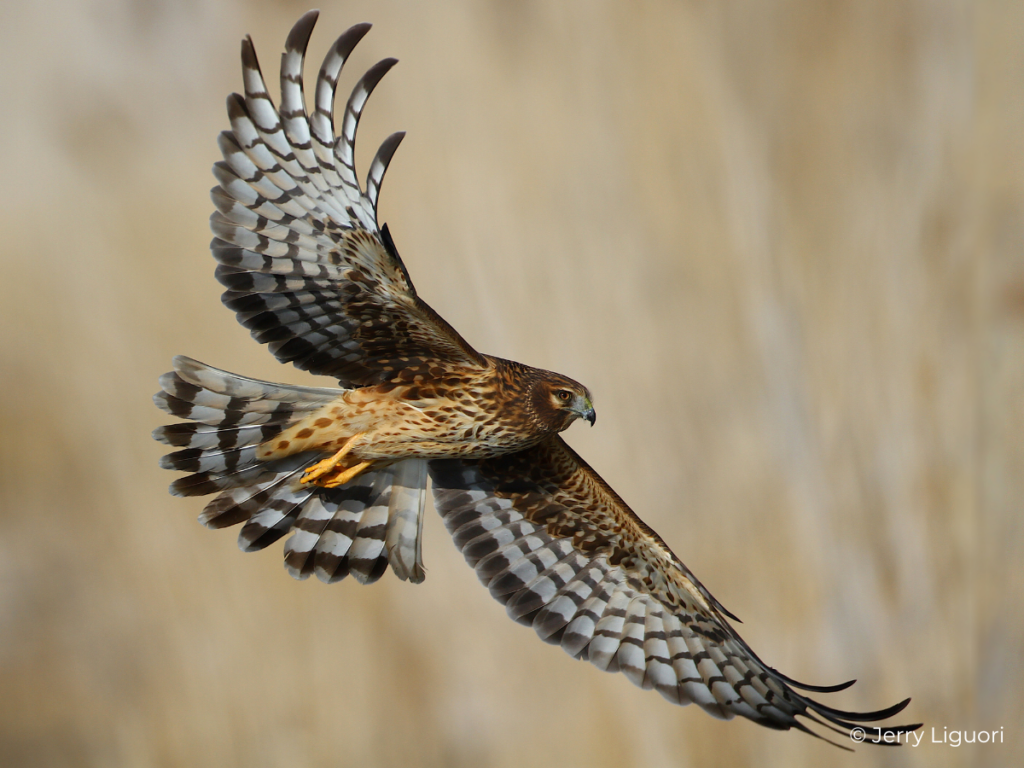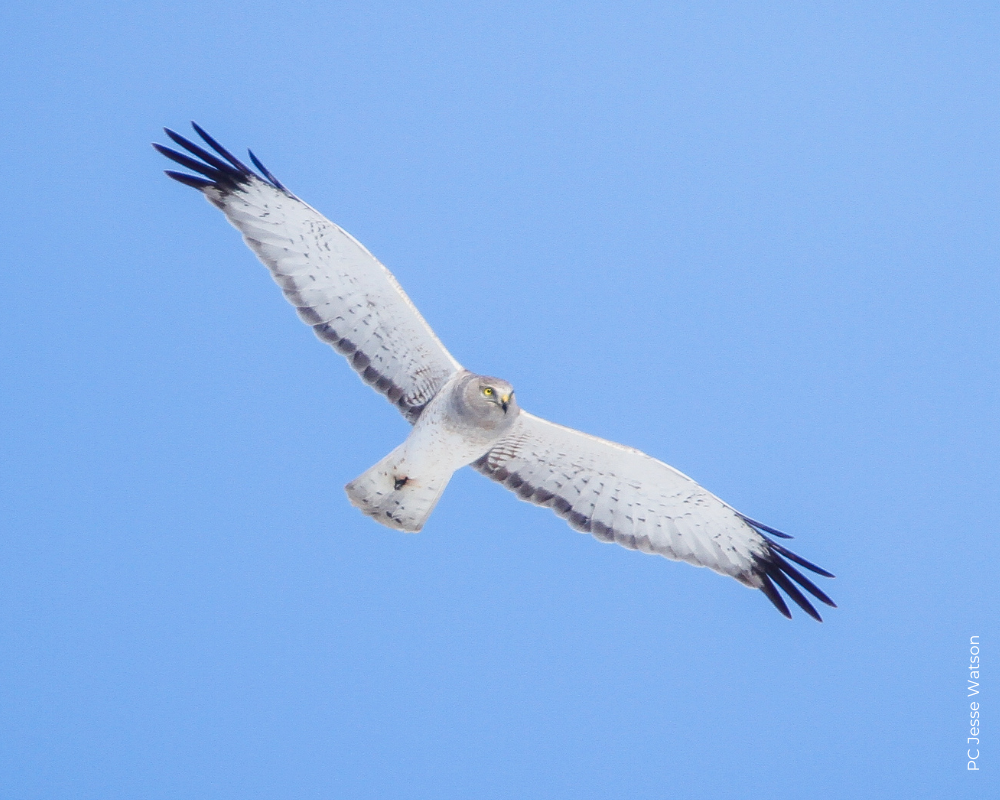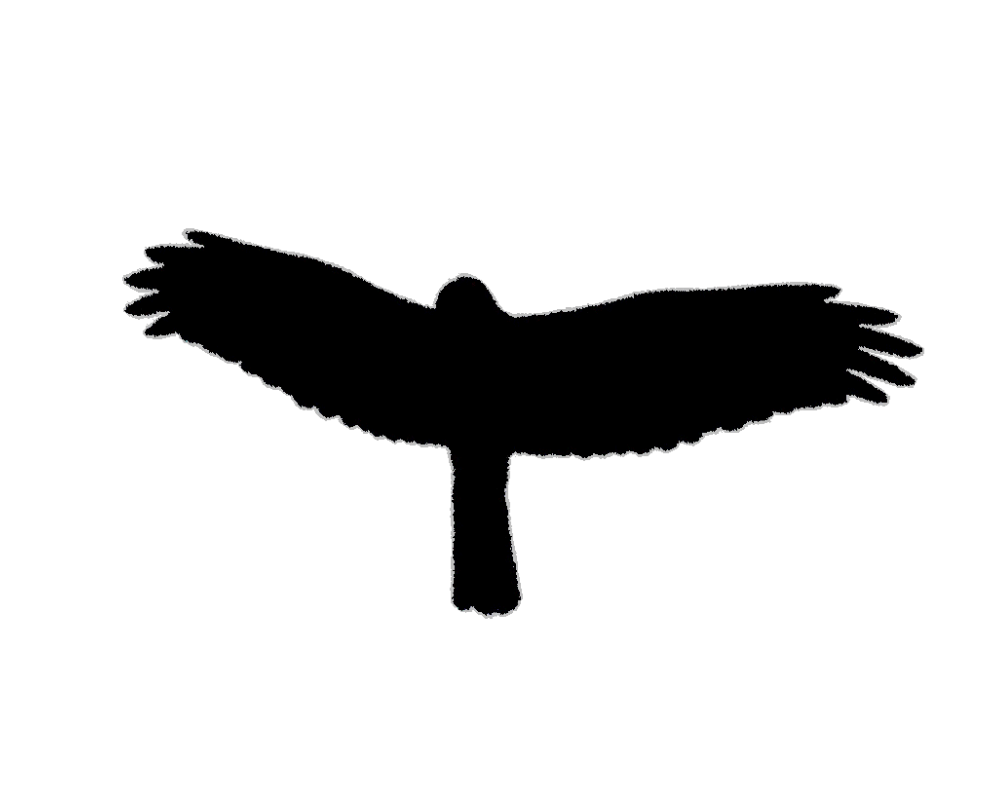Overview
Northern Harrier inhabits open grasslands, marshes, and sagebrush throughout North America, where they are widespread but somewhat uncommon. They are often compared with owls due to their similar facial disk, acute hearing, and ability to hunt and migrate in low light. However, Harriers typically migrate and hunt during daylight hours when they spend much of the time aloft, coursing over meadows and fields low to the ground in search of mice, voles, and small birds, often tilting and turning revealing their characteristic “white rump.” The Harrier has very long legs adapted for capturing prey in tall grasses or snatching a songbird out of the air that is flushed from the ground.
Northern breeders are migratory, wintering primarily in the Lower 48. Sometimes tens to hundreds of birds might gather over an area, and these birds roost communally, often with Short-eared Owls. Harriers perch (only briefly) on low posts or on the ground and only rarely in trees. They are often called “chameleons” by hawk watchers because they can appear buteo-like in a soar and falcon-like in a glide. Harriers are fairly quiet but give an emphatic “whew, whew, wee, wee, wee, wee, wee.” They are vocal in small groups in winter, giving a high whine when defending a patch or during aggression.




